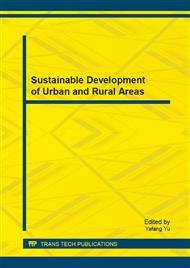p.79
p.83
p.87
p.92
p.97
p.107
p.110
p.115
p.119
The Classification of Residential Defects (Case Study: Citra Garden Residence in Indonesia)
Abstract:
The classification of residential defects (case study: Citra Garden Residence in Indonesia) was studied. This study aims to more satisfied customers. The study begins with the literature review to formulate the classification of house defects. Then classify the defect of house into two, namely the classification of house defects based on period of post hand over, and the classification of house defects based on category of the defects. Further studies followed by dividing the classification of house defects based on period of post-hand over into three parts, namely before hand over period (inviting time), hand over period, and post-hand over period. The next step is to check the complaint report from the customer service in Citra Garden Residence in Indonesia to quantificate the defects of the house. The classification of house defects based on category of the defects divided into two, namely structural defect (minor, moderate, serious), and nonstructural defect (minor, moderate, serious). The next step is also to check the complaint report from the customer service in Citra Garden Residence in Indonesia to quantificate the defects of the house.The results show that complaint hand over in the level minor defect is the highest complaint. Complaint in the serious defect is the lowest complaint.
Info:
Periodical:
Pages:
97-106
Citation:
Online since:
January 2014
Authors:
Price:
Сopyright:
© 2014 Trans Tech Publications Ltd. All Rights Reserved
Share:
Citation:


